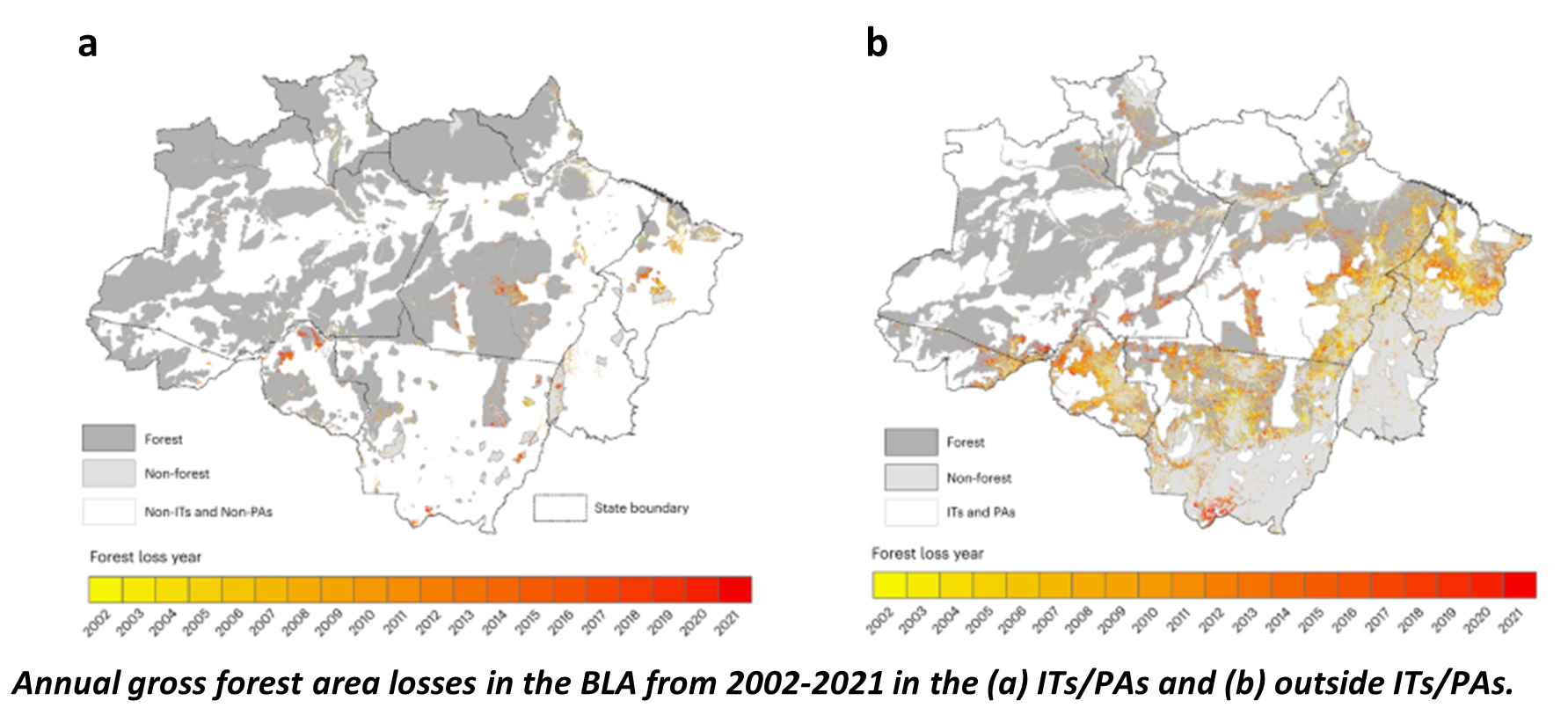
S3OK Forest Mapping Algorithms Aids Brazilian Amazon Forest Conservation Study
EPSCoR Update - March 2023
The Brazilian Amazon has the largest area of tropical rainforest and is habitat of the highest biodiversity in the world. In the past two decades, the indigenous territory (ITs) and protected areas (PAs) have increased, covering 43% of the Brazilian Legal Amazon (BLA). The establishment of ITs and PAs has significantly reduced deforestation and increased forest conservation in the BLA. However, the effects of the ITs and PAs in reducing deforestation remain unclear due to differences in the available data and due to continuing conflicts between forest conservation and socio-economic development in the BLA. There have been increasing threats to forest conservation in ITs and PAs due to weakened environmental laws and regulations, changes in government policies, and vast economic development in the past decade in Brazil.
 Hence, Dr. Yuanwei Qin from the University of Oklahoma’s Department of Microbiology and Plant Biology led an international team (Xiangming Xiao, Fang Liu, Fabio de Sa e Silva, Yosio Shimabukuro, Egidio Arai, and Philip Martin Fearnside) to investigate the interannual changes in forest areas and deforestation in the BLA, ITs, PAs, and non-PAs, and the effects of national PAs and state PAs in deforestation from 2000-2021 under the changing environmental laws, governance, natural disturbance, and covid-19 pandemic.
Hence, Dr. Yuanwei Qin from the University of Oklahoma’s Department of Microbiology and Plant Biology led an international team (Xiangming Xiao, Fang Liu, Fabio de Sa e Silva, Yosio Shimabukuro, Egidio Arai, and Philip Martin Fearnside) to investigate the interannual changes in forest areas and deforestation in the BLA, ITs, PAs, and non-PAs, and the effects of national PAs and state PAs in deforestation from 2000-2021 under the changing environmental laws, governance, natural disturbance, and covid-19 pandemic.

“We generated annual evergreen forest map using daily images acquired by moderate resolution imaging spectroradiometer (MODIS) onboard the Terra satellite during 2000-2021 and used the forest mapping algorithms we developed and evaluated in Oklahoma and other regions,” Qin said.
“We found that ITs and PAs increased to cover 52% of forest area and observed only 5% net forest loss and 12% gross forest loss in the Brazilian amazon during 2000-2021,” Qin added.
The research team also investigated the effect of ITs and PAs on the annual gross forest area loss rates before and after the ITs and PAs were established in the BLA.
“During 2003-2021, we found that gross forest area loss fell 48% in PAs with strict protection objective and 11% in PAs with sustainable use objective after the PAs were established in the BLA,” Qin said. “However, the percentage rate in annual gross forest area loss in ITs and PAs in 2018-2021 was twice than the forest loss in the non-PAs. This could be attributed to the recent changes of Brazil’s forest policies, which may have affected forest conservation in the ITs, PAs, and non-PAs,” Qin added.
“Our results indicate that ITs and PAs play an important role in forest conservation in the BLA. We suggest that more consideration is strongly needed to strengthen the environmental policies and laws aimed at conserving and protecting forest areas in ITs and PAs of the Brazilian Amazon,“ Xiao said.
- Read the full journal article.
____________
Funding for this project was provided in part by the National Science Foundation under Grant No. OIA-1946093 through OK NSF EPSCoR for Qin and Xiao, the NASA ‘Geostationary Carbon Cycle Observator Mission(GeoCarb Contract no. 80LARC17C0001) and NASA Science Team for the OCO Missions, Conselho Nacional de Desenvolvimento Científico e Tecnológico (CNPq) (312450/2021-4), Financiadora de Estudos e Projetos/Rede Brasileira de Pesquisas sobre Mudanças Climáticas Globais (FINEP/ Rede Clima) and Fundação de Amparo à Pesquisa do Estado do Amazonas (FAPEAM) (01.02.016301.000289/2021-33).
